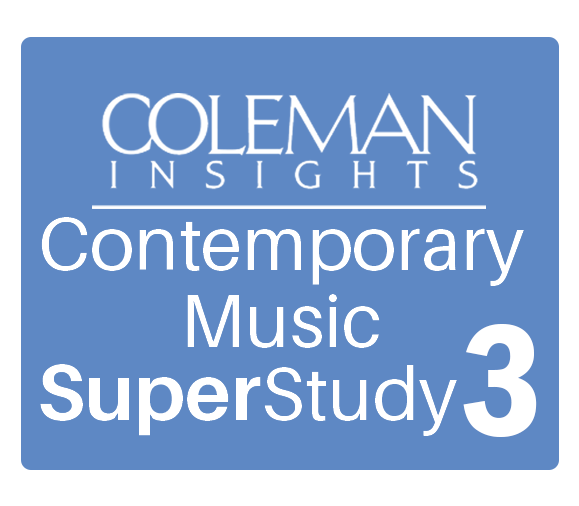
A major benefit of the long-term relationships we have with so many audio brands is that we get to look at trends. Lots and lots of trends. By measuring things in a consistent manner year after year and study after study, we get unparalleled insights into how the behaviors, tastes, and perceptions of consumers change over time. I’ll admit to being a geek about a lot of this stuff, especially when it comes to music.
That’s why I am looking forward to our upcoming release of Contemporary Music SuperStudy 3, a preview of which we are presenting at this week’s virtual All Access Audio Summit. Sure, I enjoyed the two previous studies in 2019 and 2020, but now that we’ve arrived at the third edition of our now-annual assessment of the state of contemporary music tastes in the United States and Canada, I am geeking out about the opportunity to share some real trends.

This opportunity is perhaps more intriguing than it would otherwise be this year because of the coronavirus pandemic. We’ve been through more than a year with almost no live music performances and many artists have held back their releases of new material, so it will be especially interesting to see if this has impacted the state of contemporary music.
If you’re not familiar with our Contemporary Music SuperStudy series, let me give you a quick primer. We compile a list of the most-consumed songs from the previous calendar year and then test those songs with 1,000 consumers in the United States and Canada using the same platform we use for delivering FACT360SM Strategic Music Tests to our radio station clients. The list is built with help from our friends at MRC Data and is based on consumption via radio airplay, streaming, and sales. We drop any songs that are at least five years old and then add songs that are among the most consumed from each major genre that make up the world of contemporary music so that each of those genres receive adequate representation. The 1,000 consumers who participate in the study are representative of the population in terms of age, gender, ethnicity, and geography.

By using this consistent methodology every year, the Contemporary Music SuperStudy is worthy of its designation as the benchmark of contemporary music tastes. Many of us in the radio, music, and streaming businesses get glimpses of how music tastes are changing through the many individual audio brand studies, music tests, and new music research reports we see over the course of the year, but the Contemporary Music SuperStudy gives us a truly objective view of those changes on the macro level.
When we began to analyze the data, many questions—informed by what we learned in the two previous editions of the study—immediately popped into my head and the heads of my colleagues. These include:
- What will supplant last year’s top song—“Shape Of You” by Ed Sheeran—as the best-testing song this year?
- What new songs released in 2020—and therefore appearing in the study for the first time—did consumers rate highest?
- Will Pop titles continue to outperform their presence in the test list?
- Will the improvement we saw for Country titles between the first and second study continue with the third study?
- Has the pandemic impacted the demand for contemporary music?
- Will Hip Hop/R&B titles continue to lead the tastes of younger listeners?
The good news is that if you have similar questions to ours, the answers to them are on their way. If you are attending the All Access Audio Summit this week, be sure to join us at 2PM Eastern/11AM Pacific this Thursday, April 22nd when John Boyne, Sam Milkman, and I will reveal many of the topline findings from the study. Our presentation will cover the best-testing titles overall, how this year’s most popular songs compare with previous years in terms of genre and era, and how music tastes vary across demographics, geography, political persuasion, and media habits.
In addition, we will devote the next three weeks of Tuesdays With Coleman to more detailed discussions of the study’s most important findings, culminating in a free, publicly available webinar on Thursday, May 13th in which we will take a deeper dive into our findings. (Registration for the webinar will open later this month.) Finally, later this spring, we will provide online access to the song-by-song data from the study to all active Coleman Insights clients as part of our Coleman Complete service.
At Coleman Insights we often say that music tastes change and that’s why we track them. For my fellow data geeks and music fans, the next few weeks should be a lot of fun. My colleagues and I hope you gain a lot of insights out of our Contemporary Music SuperStudy 3 findings and look forward to your feedback.
